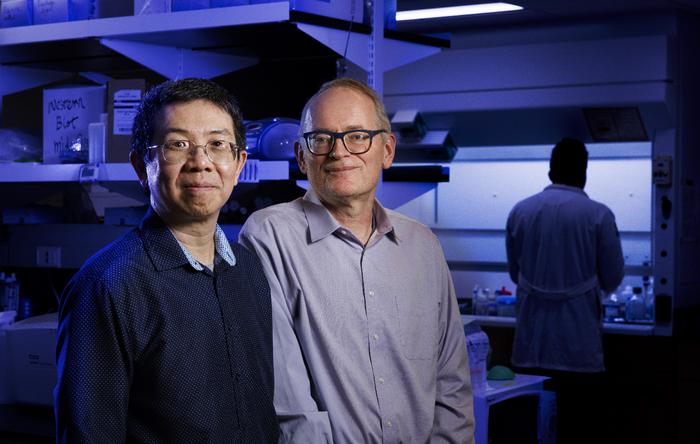A pair of researchers from University of Nebraska-Lincoln has secured a notable win in a competition hosted by the National Institutes of Health. The contest aims to find innovative methods for delivering genome-editing technology to individuals afflicted with both rare and common diseases.
Janos Zempleni, Willa Cather Professor of molecular nutrition, and Jiantao Guo, professor of chemistry, were announced as Phase 1 winners in the NIH’s Targeted Genome Editor Delivery Challenge. The challenge, consisting of three phases with a total prize pool of $6 million, selected the University of Nebraska–Lincoln team among the initial 30 recipients unveiled in December 2023.”
Zempleni and Guo will use the $25,000 prize to further their work on universal milk exosomes — natural nanoparticles found in milk — capable of transporting gene editors throughout the body.
These customizable exosomes promise safety, scalability, and, unlike conventional nanoparticles, the ability to evade macrophages, the immune system cells responsible for eliminating foreign substances.
“With our technology, you could treat basically any disease known to mankind, both rare and common,” said Zempleni, who leads the project and directs the Nebraska Center for the Prevention of Obesity Diseases through Dietary Molecules. “Federal agencies are not overly eager to invest in treatment of rare diseases because it costs a lot of money, yet only a few people benefit.”
“With the flexibility of our technology, we can, without extra cost, provide a platform to treat everything, from common diseases like brain cancer, to very rare gene mutations that maybe affect only 500 people in the United States.”
The innovation tackles a significant hurdle in using gene editing for therapeutic purposes. While tools like CRISPR-cas9 can manipulate disease-causing DNA, there is currently no reliable method to ensure these editors reach the intended organs or tissues. Additionally, even when they do, they often fail to survive in sufficient numbers to alter the disease’s progression.
The duo’s solution combines Zempleni’s expertise in milk exosomes with Guo’s skills in bioorthogonal chemistry. Zempleni’s previous research laid the groundwork for loading milk exosomes with therapeutics and directing them to specific tissues. Additionally, he has demonstrated the exosomes’ biological safety.
To enhance versatility, Zempleni developed a method to attach three peptides to the exosome membrane. These peptides guide the exosomes to specific sites in the body, protect them from destruction, and enhance their survivability within target cells.
Guo’s contributions include anchoring the peptides to the exosome membrane using bioorthogonal chemistry approaches. This ensures stability and uniformity, crucial for the commercial viability of milk exosome-based therapeutics.
“If this were to go to clinical trials, it will be easier for the FDA to see that this is a defined, homogenous structure, rather than random labeling that would lead to batch-to-batch differences,” said Guo, who leads the Nebraska Center for Integrated Biomolecular Communication.
Zempleni and Guo are also incorporating a polyhistidine tag to enable purification of the exosomes at a low cost and high purity.
Looking ahead, Zempleni aims to package the milk exosomes with CRISPR-cas9 cargo and partner with experts to develop transgenic livestock capable of producing exosomes with gene-editing cargo.
The researchers have already licensed their patented inventions to a private company for therapeutic applications, particularly for delivering RNA therapeutics to brain tumors.
They are currently preparing their application for Phase 2 of the TARGETED Challenge, with hopes to further advance their groundbreaking research.


